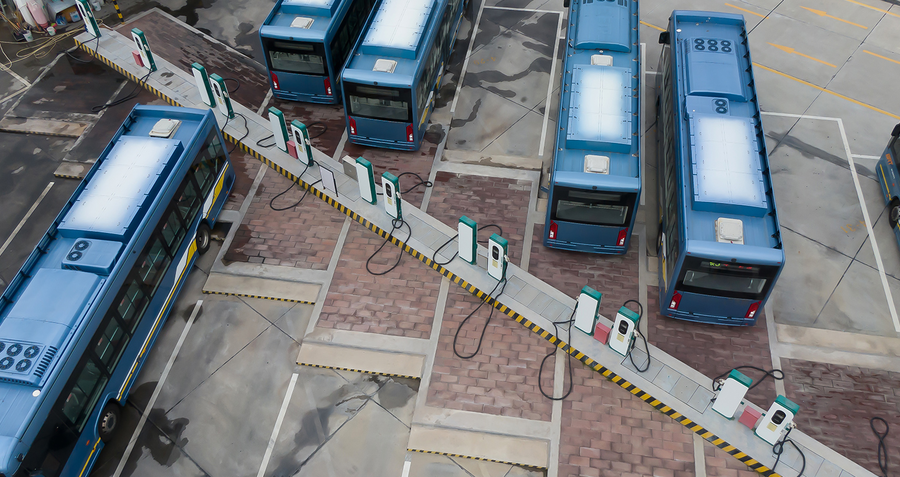2023 has been an interesting year so far, especially to note the seismic shift we are experiencing within the Australian transport sector.
Only recently, most people in Australia wouldn’t believe that the country was ready to transition to zero-emission vehicles. Any discussion on this topic would evoke the usual arguments, “we don’t have the infrastructure”, “the political will”, “how will heavy zero-emission vehicles travel long distances?”, “There are no zero-emission vehicles made for Australian needs and roads”, and more.
The recent climate crisis leading to bushfires, frequent floods, and energy crises were enough to make even the non-believers rethink their arguments against the need for a shift in priorities. Going green is no more an option but a necessity.
With the state and federal governments enshrining Australia’s net zero-emissions by 2050 target in legislation and committing investment certainty needed for decarbonising our economy while creating new growth opportunities, the discourse around all forms of green transport has changed.
There is more confidence in the future of transport going electric, with new players entering the market, bringing in more investment in the technology and the infrastructure required to make the clean energy transition easy and affordable.
The Challenge
However, despite the commitment, the road ahead has yet to be discovered and paved. There are many challenges the industry faces as it transitions.
From driver shortages and an aging driver workforce to a skills shortage in the electrification of depots, electric bus repairs and maintenance activities are challenges that will require time, skills training and planning.
While everyone knows how to refuel a petrol or diesel vehicle, the perception of an EV requiring longer to refuel/recharge can seem daunting, requiring both a shift in mindset and access to new technologies that improve vehicle range and reduce vehicle charging times.
Another challenge specific to the bus industry was the current contractual landscape in which bus operators work. In its current form, the all-inclusive contract requires a bus operator to take care of both the depot development and bus operations. However, transitioning to EVs will involve investment in EVs, decontamination of the depot land and development of the property to service EVs with green electrons, complexities, requiring a strategic review of depot property, leading to a separation of property development activity from the bus operations contracts.
Other challenges the Bus industry is trying to understand and tackle as part of this transition include energy certainty, from having easy access to fuel to now relying on the grid for electrons, especially at a time when energy costs are skyrocketing can be unnerving. The transition to EVs can be a success only if it is as seamless and efficient as the existing ways of operation. Also, when working towards zero-emissions goals, it becomes imperative for bus fleet operators to ensure the electrons fuelling their vehicles are green and obtained from renewable energy sources. This adds another layer of complexity in building the infrastructure required to operate EV fleets.
The opportunity and setting up for success
Realising the imminent increase in demand for energy owing to the increased reliance on the grid for fuelling electric vehicles on Australian roads, EnergyAustralia has been diligently building new capabilities to partner with the transport industry.
Watch our webinar on the subject, hosted by Queensland Bus Industry Council to learn more:
EnergyAustralia’s energy ecosystem for green transport
The complexities of this transition require an energy expert that could facilitate building the EV charging and renewable energy infrastructure needed to transition to electric vehicles (EV) successfully.
In fact, EnergyAustralia recently outlined plans to support bus fleet electrification by working with bus operators to plan and build the infrastructure to charge their fleet.
According to EnergyAustralia Managing Director Mark Collette, it is another way to contribute toward Australia’s emissions reduction targets. “For heavy vehicle and bus operators, though, this transition is not just about buying electric - they need to plan for the infrastructure to charge their fleet. We are now partnering with fleet owners as they plan for their move from diesel to electric through depot charging solutions. This includes helping with depot development, grid connections, renewable energy, energy management and contracts. Importantly, these solutions need to be implemented in a way that is safe for people and the environment.
“We are also working to ensure the energy used in depot changing facilities is clean through the development of grid-scale batteries and pumped hydro projects to support the transition to renewables.”
EnergyAustralia’s Green Transport team has been partnering with bus OEMs to make it easy for their customers to plan and work on their custom fleet and EV charging infrastructure requirements.
Transitioning the transport industry to EVs is not just about installing a few chargers along the way; it is about looking to the future and understanding what it would mean to have millions of vehicles relying on the energy system to keep them moving.
It requires ensuring the system is ready to meet this increase in demand over time and that it is achieving our zero-emissions goals through this transition.
We have to look at the big picture and work on building a solution that addresses the EV charging network in Australia as a whole, and that is how we will help set the transport industry up for success through this monumental transformation.
Talk to us about how we can help your business plan for the future of transport.
Email us at greentransport@energyaustralia.com.au




